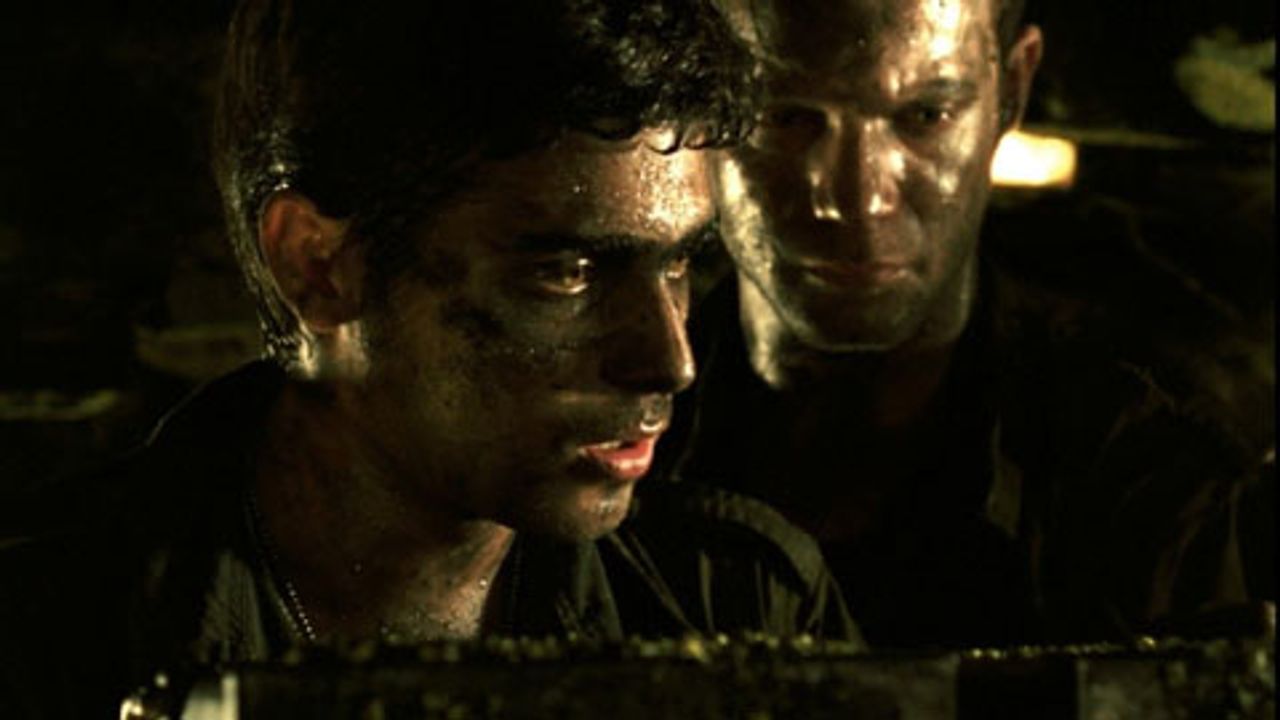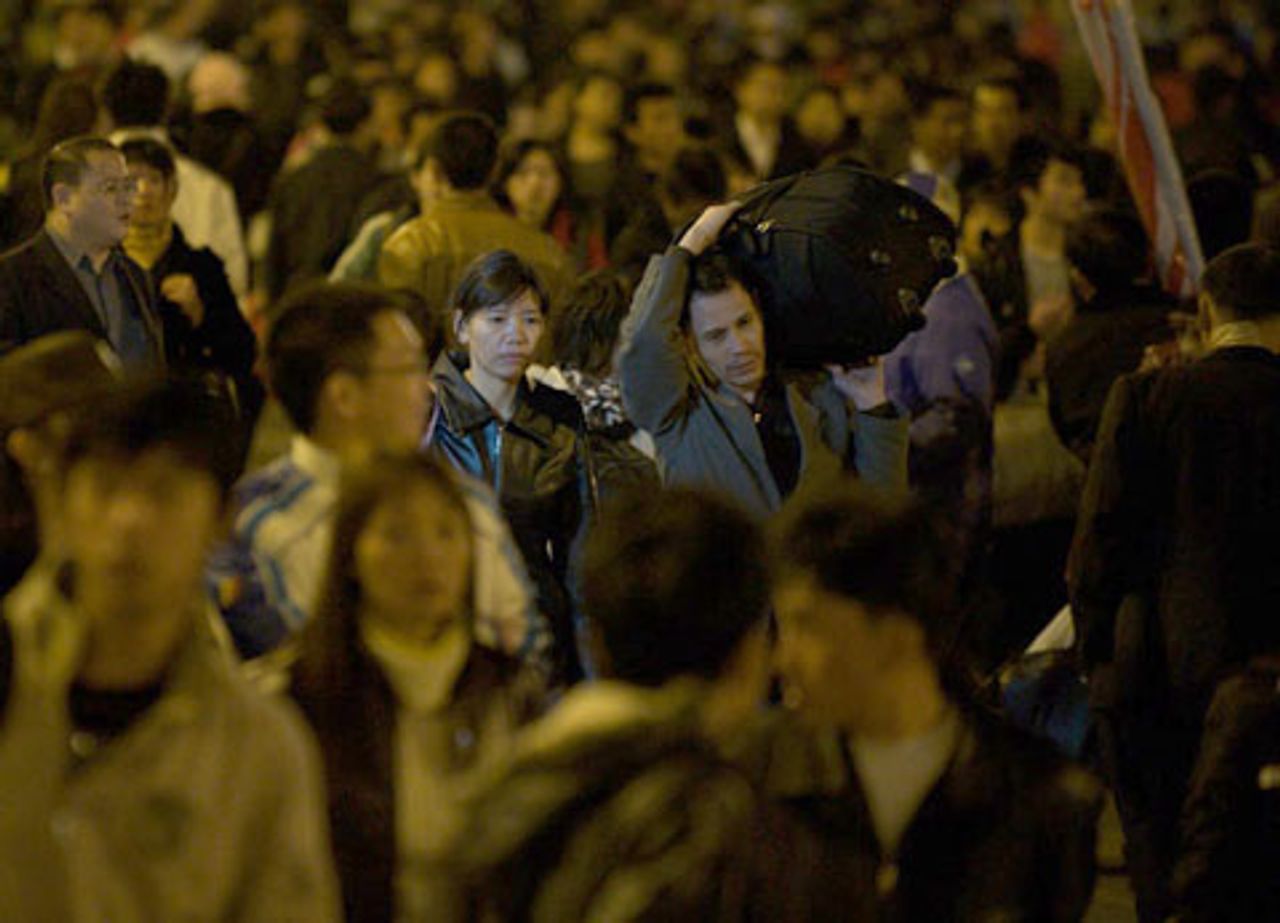This year’s Sydney Film Festival screened 157 feature-length movies from more than 45 countries, including a number of recent prize-winning works from Toronto, Venice, Berlin, Cannes and other international festivals.
Increased operating costs, growing debts and the loss of major corporate sponsors has led to speculation over the past three years that the Sydney Film Festival—one of Australia’s longest running festivals—may be shut down. Fortunately this has not occurred. In fact, festival organisers have reported that ticket revenue this year increased by 15 percent, session attendances were up by 20 percent and more than 25 percent of screenings were sold out.
Finances were also improved by additional funding from the New South Wales government—an extra $2.25 million over the next three years—up from the $660,000 already allocated. The additional money is part of the NSW government’s ongoing attempts to lift the state’s profile as a film production centre. While the government insists that this money is not tied to any particular requirements, a new board of management structure has been established to include a state government representative.
Some Sydney Film Festival members have warned that this could compromise the event’s artistic independence. This is a real concern. The state government claims that it will not influence future programming decisions. This should be taken with a grain of salt.
Always sensitive to a range of lobby groups, the state government has no interest in cultivating socially critical cinema and has steadfastly refused to oppose increasingly retrogressive federal government censorship laws that have previously impacted on the festival.
In 2003, for example, Australian censors banned a Sydney Film Festival screening of the US movie Ken Park. Calls by festival organisers, filmmakers and festival patrons for the state Labor government to grant the movie a “Special Exemption” and bypass the ban were studiously ignored.
In May 2008 NSW police shut down an exhibition by internationally acclaimed photographer Bill Henson in Sydney, seizing photographs and threatening the photographer and gallery owners with child pornography charges. Kevin Rudd, then the Australian prime minister, and his NSW state counterpart denounced Henson’s work and several state-funded galleries were directed to remove photographs from public view.
Expansion plans but artistic problems
Buoyed by the additional state finance and increased ticket receipts, event organisers have announced that the festival wants to expand its “geographic footprint”. Future festival screenings will apparently be extended into Sydney’s western suburbs and attempts made to establish links with local French, Russian, Chinese and Arabic film festivals. The current “travelling” component of the festival will cover a larger number of rural areas.
The decision to screen festival movies in other areas is a positive step. The key problem, however, remains: the lamentable state of contemporary filmmaking, which lags way behind social and political developments and for the most part avoids serious explorations of the challenging range of issues confronting ordinary people in the twenty-first century.
Too few filmmakers are thinking deeply enough about the world in which they live—the ongoing global financial crisis, growing social inequality and neo-colonial wars of aggression—or, if they are, it finds only a pale reflection in their work.
This criticism applies equally to commercial studio output and so-called independent work. It is not lack of technical skills. Almost all the movies screened were competently made but characters and stories with complexity and depth can only be created by directors who understand something more than their immediate environment. A passion for history, humanity and a socialist-minded outlook still remain alien or at best abstract formulations in contemporary cinema.
While it is always difficult to provide a detailed overview of any film festival, given that it is not possible to watch all the movies on offer, some generalisations can be made, particularly about this year’s best picture competition. The entrants in the annual competition are selected on the basis that they are “bold and risk-taking” works. Translated into current cinematic criticism, this generally means technically accomplished but narrowly focused works. If selections were made along socially-conscious artistic lines then only a handful of works screened would make the list.
This year’s $60,000 prize, for example, was awarded to Heartbeats by Xavier Dolan, a 21-year-old French-Canadian filmmaker and actor. Scheduling clashes prevented me from watching this movie but it is about an unconsummated ménage-a-trois with cinematic references to Francois Truffaut’s Jules and Jim and the work of the much overrated Hong Kong director Wong Kar-wai. Heartbeats is expected to be released in Australia over the next couple of months.
Competition jury president Jan Chapman lavishly praised Dolan’s movie for its examination of “the great crippling foibles of human nature—the hopeless crush”. But filmic explorations of “hopeless” youthful infatuations are hardly rare commodities. In fact, this subject matter underpins literally hundreds of movies churned out each year by the giant entertainment conglomerates.
Other competition films included the Cannes best picture winner Uncle Boonmee Who Can Recall His Past Lives, a semi-mystical cinematic poem about the last days of a small rural landholder in Thailand, directed by Apichatpong Weerasethakul; Michael Winterbottom’s The Killer Inside Me, about a Texas policeman turned murderer; Lola, a social realist drama about two poverty-stricken grandmothers in Manila and directed by Brillante Mendoza; and Four Lions, a British comedy by Chris Morris about a group of hapless suicide bombers.
This eclectic collection, along with other competition works—How I Ended this Summer (Alexei Popogrebsky), The Tree (Julie Bertucelli), Moloch Tropical (Raoul Peck) and If I Want to Whistle, I Whistle (Florin Serban)—will be examined in future reviews. The latter two were the most socially perceptive of the competition features.
Moloch Tropical is a biting political satire set in Haiti and directed by Raoul Peck (Lumumba [2000]). The movie portrays the last 48 hours of a fictional Haiti president, Jean de Dieu. The president’s dictatorship disintegrates as it is confronted with popular unrest and the decision of former western power allies to withdraw their support. Introducing Moloch Tropical, Peck told Sydney audiences that his movie was also a metaphor for the “degradation of basic democratic rights now underway” and could, with slight modifications and a few name changes, apply to recent US and European governments.
 Lebanon
LebanonNoteworthy out-of-competition features were Lebanon, an Israeli antiwar drama about the 1982 invasion of southern Lebanon; Winter’s Bone, a low-budget feature about crime and poverty in America’s Appalachians; and Son of Babylon, a joint Iraq/French/British drama about a Kurdish grandmother and her grandson in the immediate aftermath of the 2003 US invasion of Iraq. Honey, a visually lyrical story about the relationship between a six-year old boy and his bee-keeping father in rural Turkey, is a humane work with some poignant moments. Some of these will be examined in future reviews.
A real highlight of the festival was the screening of several recently restored classics: Senso (1954) directed by Luchino Visconti, A Woman Under the Influence (1974) by American independent director John Cassavetes and Australian director Gillian Armstrong’s The Last Days of Chez Nous (1992). Senso is an extraordinary achievement, one of the major works of post-World War II cinema and should be compulsory viewing for all filmmakers and serious film lovers (see: “Luchino Visconti’s Senso—drama and history”).
More than 30 feature-length documentaries were screened during the festival. While the overall collection was somewhat patchy and lightweight, two documentaries stood head and shoulders above the rest: The Most Dangerous Man in America: Daniel Ellsberg and the Pentagon Papers, directed by Judith Ehrlich and Rick Goldsmith, and Last Train Home, directed by Chinese Canadian-based filmmaker Lixin Fan. Both movies have been deserved prize winners at documentary film festivals since their release last year.
As its title implies, Ehrlich and Goldsmith’s feature explores the political evolution of Daniel Ellsberg from a US military intelligence analyst and militant supporter of the Vietnam War to a courageous and determined opponent of Washington’s imperialist interventions. The documentary systematically explores how Ellsberg’s leaking of the Pentagon Papers had a devastating impact on the Nixon administration.
 Last Train Home
Last Train HomeLixin Fan’s intimate documentary examines the hopes and aspirations of a Chinese rural migrant couple working in a Guangzhou garment factory. The film, which covers a three-year period, opens just before the Chinese Lunar New Year as the married couple and millions of other low-paid workers attempt to secure rail tickets to return to their rural homes and their families for the Spring Festival.
Lixin Fan told the media last year that his movie was inspired by “the people who toil in the factories and make everything we use”. “Although the film is about [rural] migrants,” he added, “it’s also about the country and about how the world works.” This is a healthy approach but one that is sadly lacking in most contemporary filmmaking circles.
To be continued
